Baby Carriers
From papooses to slings, humans have been babywearing for centuries. We could learn a thing or two from our ancestors.
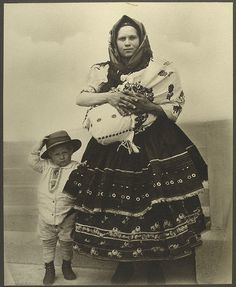
American women went away from babywearing a couple of generations ago when doctors preached that a baby who received too much love, touch, and attention would be “spoilt.”
Now we know better: newborns desperately want to hear the sound of your voice and the beating of your heart. They also have a very good sense of smell; just the scent of mommy or daddy is enough to calm their nerves. In fact, one study showed that infants who were carried/worn during the day cried and fussed 43% less (overall) and 51% less in the evening hours (4 pm to midnight)1. Yes, please! Sign me up for that.
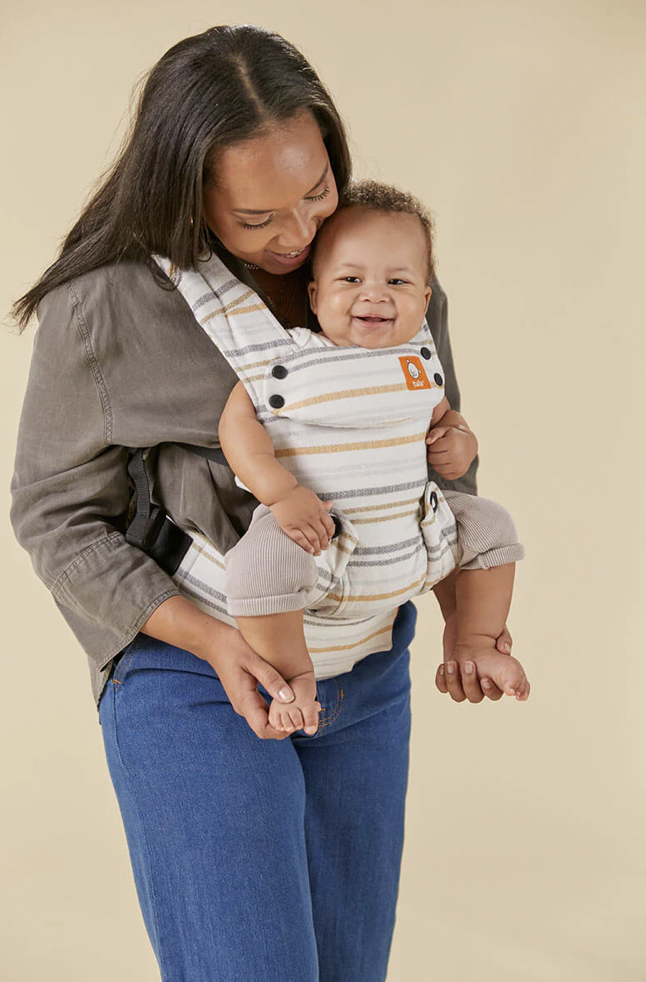
Babywearing is also a practical, logistical solution: wearing your baby allows you to go about your day like a normal person.
In the early days (before your baby can sit unassisted), babywearing is the only practical way to do things like grocery shopping, when you really need your hands free to push a shopping cart. Things like getting the mail, walking the dog, going through airport security and boarding a plane, doing housework, or navigating through a crowded street market become infinitely easier with a baby carrier.
Nay, downright enjoyable!
Not to mention, during these unprecedented times, a baby carrier can be a lifesaver and a place of safety and stability for both you and your little one. Seriously, it can be your covid-era best friend: both of your hands are free, which means you can wash them with ease, and you can shop for groceries or run into friends without worrying too much about people unwelcomely touching your newborn.
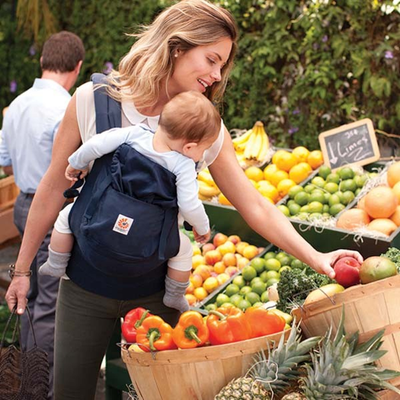
Your Lifestyle
As with strollers, all baby carriers aren’t perfect for every situation, so my advice is to decide how you will primarily use the carrier, then go from there. Meaning… will you use it for shorter periods of time (for doing things around the house, taking short walks around the neighborhood) OR will you use it for longer periods of time (like going on long walks or hikes)? Or both?
Speaking of lifestyle, excuse me while I grossly overgeneralize and stereotype people, but I really have noticed that there are two very different types of families out there: the walkers and the drivers.
The walkers are parents who live in a city or walkable suburb. They walk to neighborhood parks and cafes and take public transportation sometimes (or a lot). Perhaps they also go hiking, visit street markets/festivals, and generally have more of a metropolitan lifestyle. These moms and dads greatly benefit from longer-term babywearing. (I just described all of my mommy friends in San Francisco.)
City folks benefit greatly from a newborn carrier, then later, a high-quality, ergonomic baby carrier — one that can be worn into toddlerhood on your chest, back or hip.
The drivers are parents who live in the suburbs or a rural area and rarely get from A to B on foot. These parents mostly drive everywhere and their little ones tend to spend most time away from home in their car seats or strollers. Perhaps these parents also have a long commute from work and don’t tend to leave the house again once they arrive home. These parents will be just fine with a newborn carrier and probably won’t need/use one after 6 months or so. (I just described all of my mommy friends in Atlanta and Tampa.) It’s just not a thing in the suburbs, it seems.
After living in both environments, I can tell you that the needs of these two groups are very different (sorry for overgeneralizing, but it’s kinda true), and so each will need different baby carriers. (Yes, I know you can fall somewhere in the middle, just humor me.)
Shoulder, Chest or Hip: Ergonomics are Important
Once your baby gets older and heavier, you will really start to feel a difference in how the load feels on your body. When your baby is small, it feels like you can wear them in any position indefinitely without any pain. But when your baby gets heavier (and believe me, it happens fast!) some of these carriers are not ideal, such as the Classic Baby Bjorn.
Soft structured carriers are your best bet for babies over 6 months old because they were built with ergonomics in mind. Essentially, they put the bulk of the load on your hips rather than on your shoulders and upper back. Your hips can carry a heavier load for a longer time than your upper back.
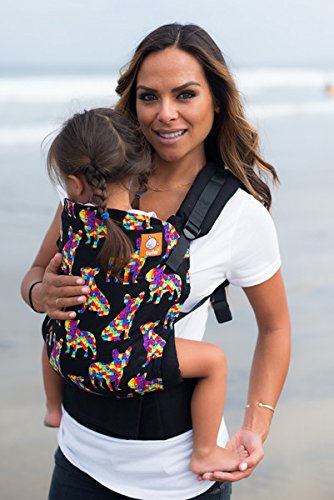
Babywearing: From Wraps To Slings, Everything You Need To Know
There are a few basic kinds of baby carriers: a wrap, a ring sling, a soft-structured carrier, and a more sophisticated hiking carrier.
You can find our product recommendations on their respective pages: Best Newborn/Infant Carriers (for young babies) and Best Soft Structured Carriers (for infants – toddlerhood).
Wrap Carrier
This is the most traditional and simplest type of carrier, though not the easier to master! Put simply, a wrap is a long piece of fabric you use to wrap your baby to your body.
There are few different ways of wrapping it, which can be difficult at first, especially with a fussy newborn, but gets easier with practice.
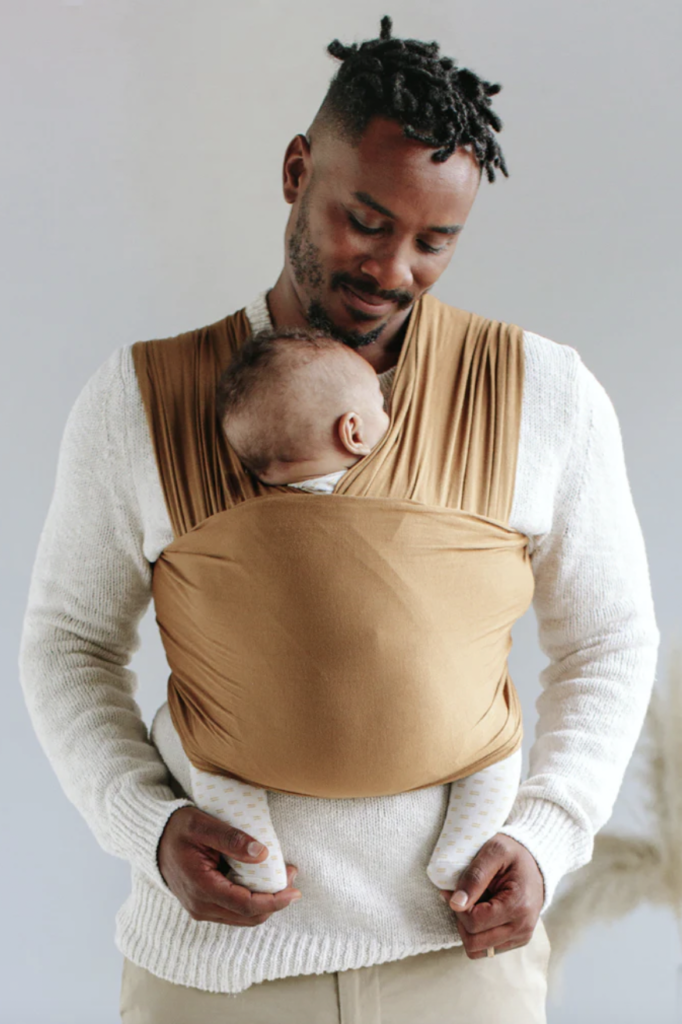
Essentially, there are stretchy wrap and woven wraps. Stretchy wraps are made of elastic fabric, like cotton or knit jersey. They are great for new moms and dads and work well with newborns up to about 9 months.
Woven wraps are made of cotton, linen, wool or hemp, are sturdier, and tend to have a higher weight limit. These can work for older babies or even toddlers, with the caveat that you have to wrap them manually each time.
Soft Structured Baby Carrier
This is the most popular and sturdy type of carrier. These “soft structured carriers” usually come with padded shoulder straps and a thick, padded waistband.
This is one of the more comfortable and ergonomic ways of wearing your baby, especially if you are interested in wearing your baby into toddlerhood or for extended periods of time. They have straps that adjust in every direction and typically give you the ability to wear your baby on your chest, back or hip.
Due to the adjustability, these carriers can be easily shared between parents.
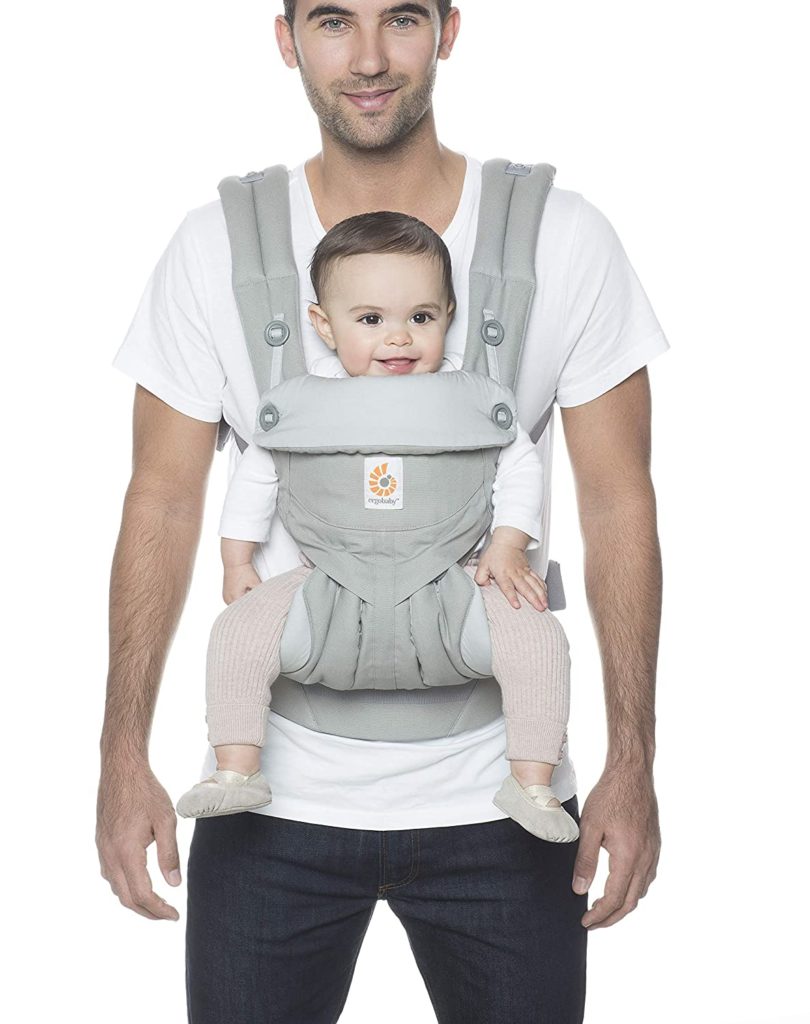
Sling Carrier
A sling is a wide piece of fabric that goes over one shoulder and across your torso. To fasten it, you thread the free end through one ring and then tuck it under the other ring. This is the most popular type of hip carrier — sometimes thought of as a “shoulder carrier.”
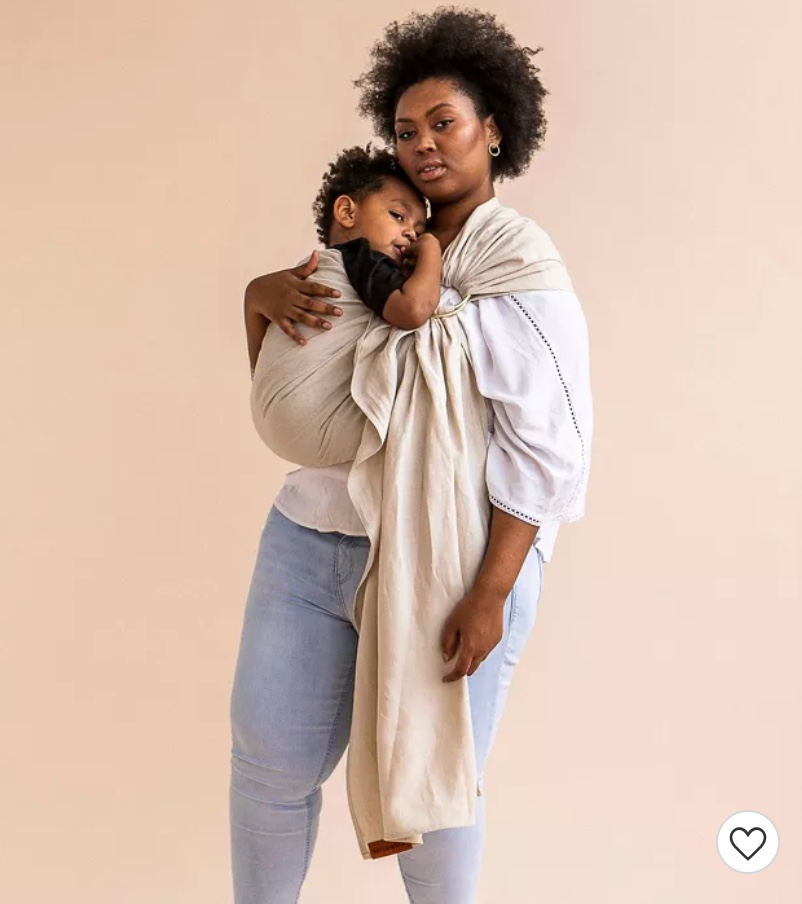
Ring slings are a popular choice for many because they’re completely adjustable, fit most body types are pretty easy to get the hang of, and wear comfortably. Unlike soft structured carriers, ring slings tend to look very organic and beautiful… there’s a “je ne sais quoi” about them.
Carriers for Dads / Men
Lots of people ask– what is the best carrier for dads?
Since men tend to be much larger/wider than women, it’s fair to say that any wrap or sling would work fine, since it’s completely adjustable. As a practical matter, most dads prefer soft structured carriers — probably because of the ease of use and because slings and wraps definitely have a certain femininity associated with them.
For XL or plus size men (or women, for that matter), we recommend the Tula Free to Grow Baby Carrier or the TBG Tactical Baby Carrier.
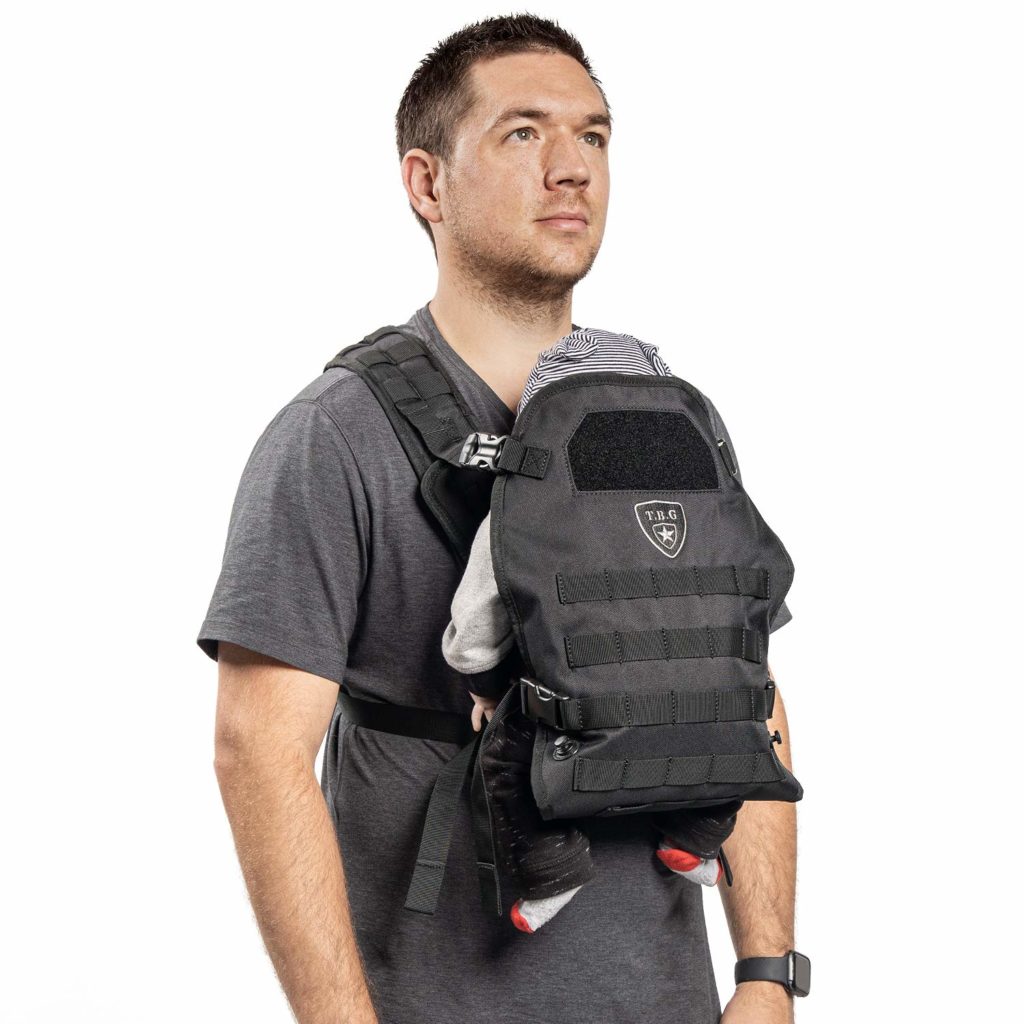
Now that you know what’s what…. let’s have a look at the different types of baby carriers and which ones are our faves…
Hey Meg! I’ve recently found Lucie’s list and it is an absolute godsend for this FTM overwhelmed by all the information and preachy must-dos. If there is one bit of feedback I can provide to this site, and seemingly every.single.baby.resource out there, it’s that it ignores the rural mom lifestyle. EVERYTHING I’ve ever read online seems geared towards city moms and not-city moms (ie suburban moms). Us farm & ruralites have a specific lifestyle too and I’d love to see that incorporated in your excellent threads!
Hi Lauren! Thanks for this feedback 🙂 I sent you an email, would love more details.
Hi! I’m about to have a second baby and wondering about the kangaroo shirts for men and women. Have you done a review on those? Thank you!!